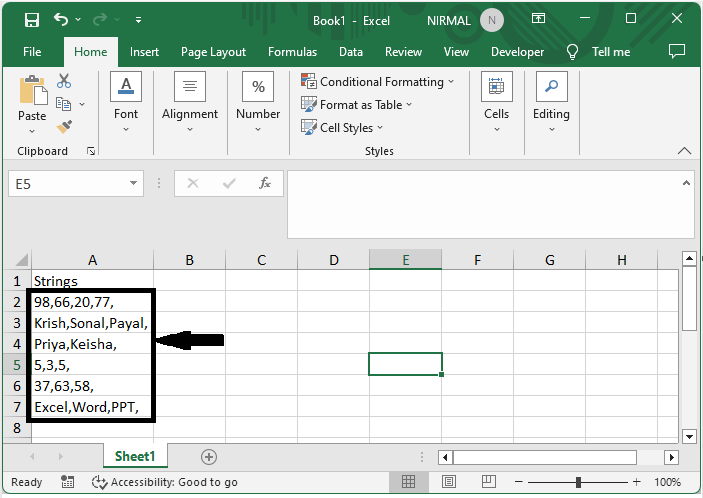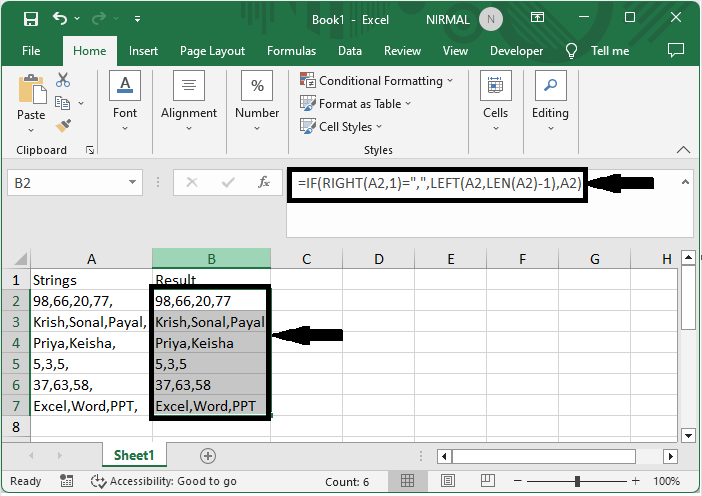
 Data Structure
Data Structure Networking
Networking RDBMS
RDBMS Operating System
Operating System Java
Java MS Excel
MS Excel iOS
iOS HTML
HTML CSS
CSS Android
Android Python
Python C Programming
C Programming C++
C++ C#
C# MongoDB
MongoDB MySQL
MySQL Javascript
Javascript PHP
PHP
- Selected Reading
- UPSC IAS Exams Notes
- Developer's Best Practices
- Questions and Answers
- Effective Resume Writing
- HR Interview Questions
- Computer Glossary
- Who is Who
How to Remove Last / Ending Comma From Cell in Excel?
Excel cells with a trailing comma at the end can be quite frustrating to work with, as you may have experienced yourself. Thankfully, there are a number of quick and simple techniques to remove those extra commas without the use of challenging formulas or intensive manual editing. In this article, we'll examine the simplest method for getting the job done.
We'll show you how to delete the trailing commas from Excel cells in this step-by-step tutorial. These techniques will assist you in cleaning up your data and presenting it in a more polished and professional manner, regardless of whether you're working with a tiny dataset or a massive spreadsheet. Make sure you have a fundamental understanding of Excel and its features before we start. From novice Excel users to seasoned Excel professionals, this tutorial is appropriate for all skill levels.
Remove Last / Ending Comma From Cell
Here we will use a formula to get the first value, then use the autofill handle to complete the task. So let us see a simple process to know how you can remove the last or ending comma from a cell in Excel.
Consider an Excel sheet where you have a list of strings separated by commas, similar to the below image.

First, click on an empty cell and enter the formula as =IF(RIGHT(A2,1)=",",LEFT(A2,LEN(A2)-1),A2) and click enter to get the first value. Then drag down using the autofill handle to complete the task. In the formula, A2 is the first cell in the range of cells.
Empty Cell > Formula > Enter.

This is how you can remove the last comma from a cell in Excel.
Conclusion
In this tutorial, we have used a simple example to demonstrate how you can remove the last or ending comma from a cell in Excel to highlight a particular set of data.

